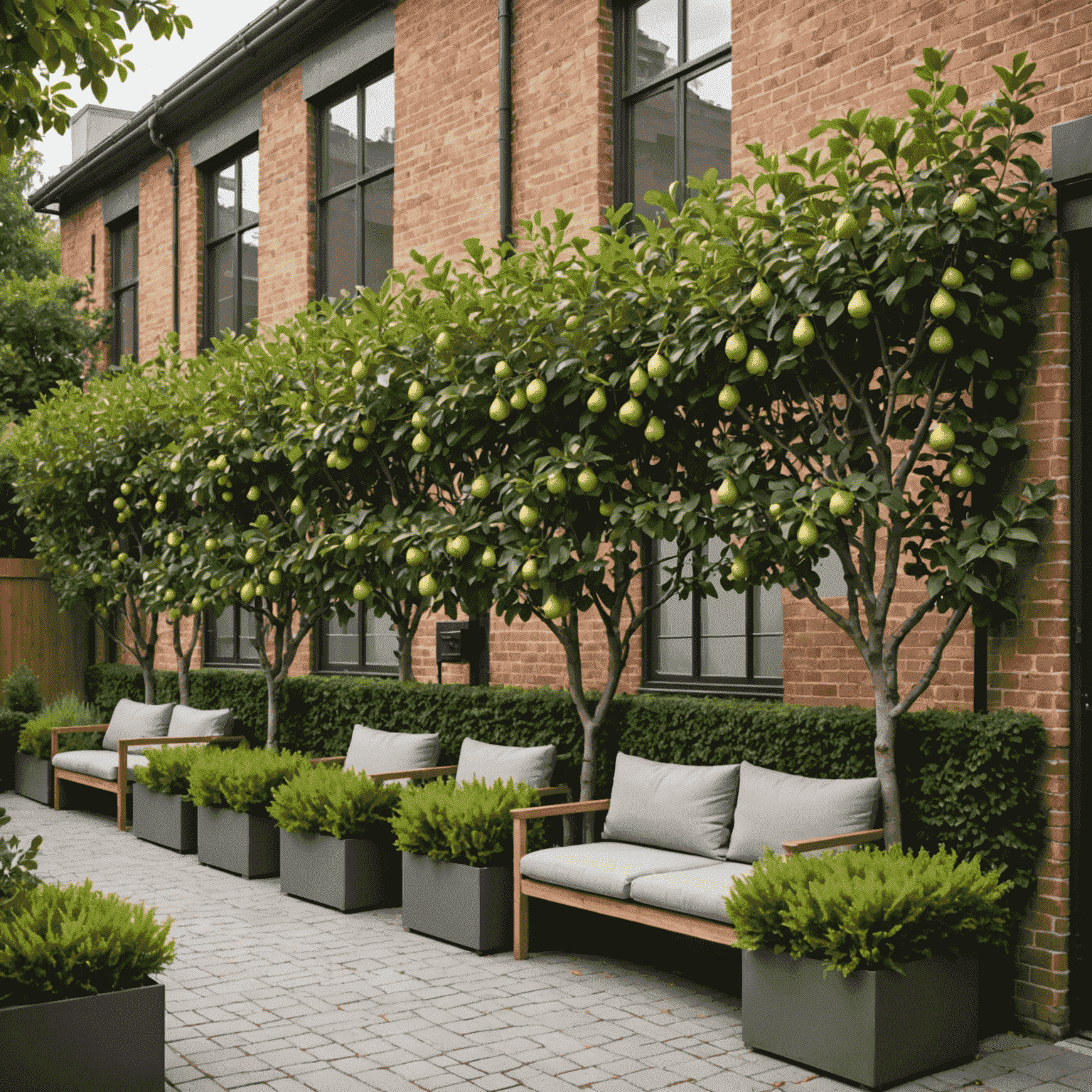Small Space Design: Integrating Espalier Trees

Discover the art of espalier and transform your compact outdoor spaces into thriving, productive gardens.
Espalier, the ancient technique of training trees to grow flat against a wall or fence, is experiencing a renaissance in urban gardening. This method not only saves space but also creates stunning living sculptures that can flourish in the smallest of areas.
Creative Ideas for Small Spaces
Balcony Bounty
Even the tiniest balcony can host a productive espalier. Choose dwarf varieties of apples or pears and train them along a trellis attached to the railing. This not only provides fresh fruit but also creates a natural privacy screen.
Courtyard Canopy
In small courtyards, create an overhead canopy by training espalier trees on a pergola. This dual-purpose design offers shade and fruit, making the most of vertical space.
Living Fences
Transform boring fences into productive boundaries by espaliering fruit trees along their length. This technique works well for urban gardens and can significantly increase your growing space.

Sustainable Benefits
- Water efficiency: Espalier trees require less water than traditional orchards
- Pest management: Easier to monitor and manage pests in compact designs
- Increased yield: Better sun exposure can lead to improved fruit production
- Climate control: Can act as natural cooling systems for buildings
Getting Started with Espalier
Choosing the Right Trees
Select trees that are well-suited to espalier techniques and your local climate. Apples, pears, and cherries are popular choices, but don't be afraid to experiment with citrus or even ornamental trees for a unique look.
Essential Tools
You'll need basic pruning tools, sturdy wire or a trellis system, and patience. Remember, espalier is a long-term project that rewards careful attention and gentle guidance over time.

Step-by-step guide to creating a horizontal cordon espalier
Embrace the Art of Small Space Gardening
Integrating espalier trees into your compact garden not only maximizes your growing potential but also adds an element of living art to your space. With a bit of creativity and patience, you can turn even the smallest outdoor area into a productive and beautiful garden that aligns perfectly with sustainable living principles.
Remember, successful espalier gardening is about working in harmony with nature, not against it. By choosing the right varieties, understanding your space's microclimate, and committing to regular, gentle training, you'll be rewarded with a stunning and fruitful addition to your small space design.
